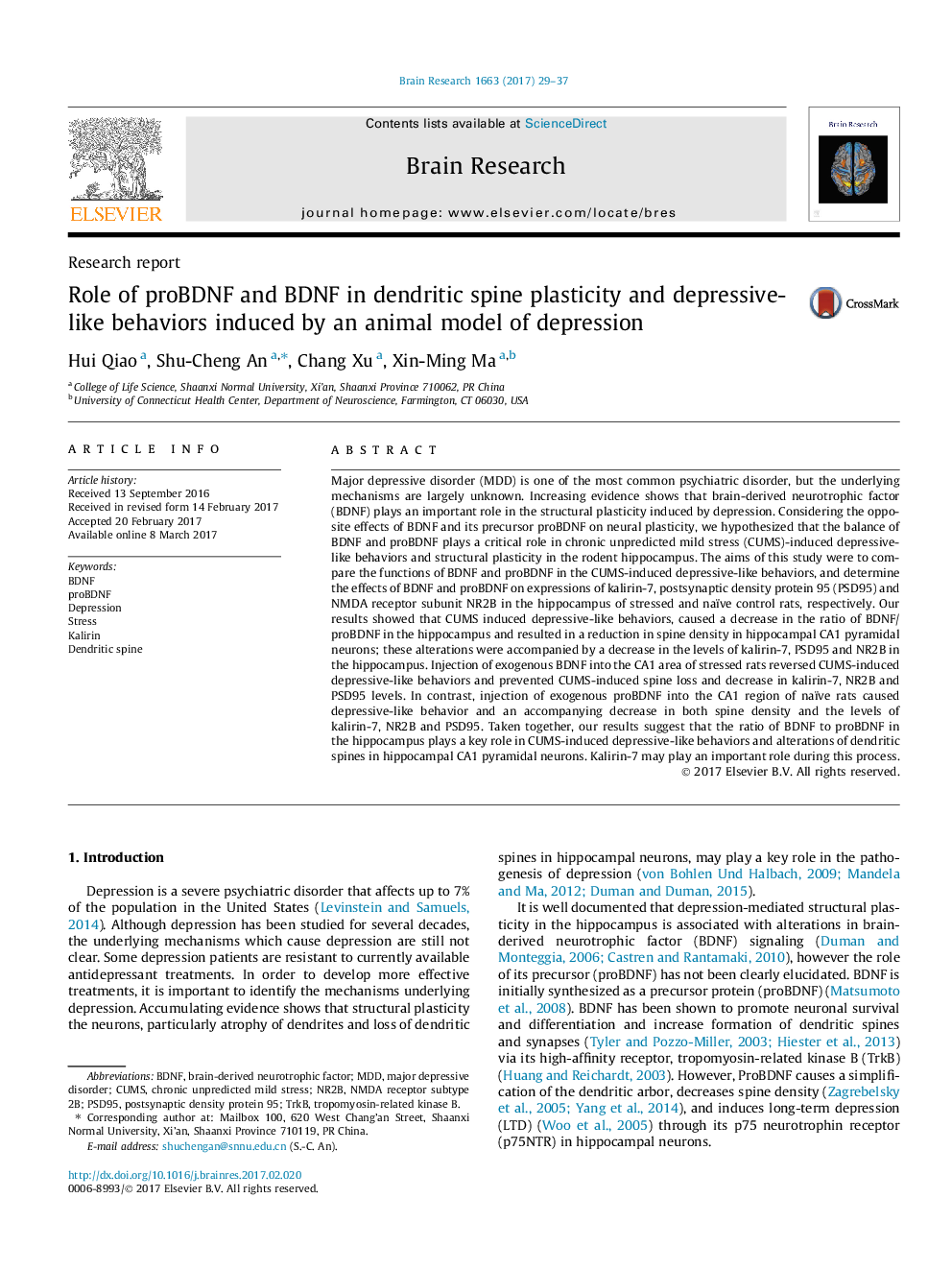| کد مقاله | کد نشریه | سال انتشار | مقاله انگلیسی | نسخه تمام متن |
|---|---|---|---|---|
| 5736644 | 1613782 | 2017 | 9 صفحه PDF | دانلود رایگان |

- Intra CA1 injection of BDNF rescued CUMS-induced behaviors and spine loss.
- Intra CA1 injection of proBDNF induced depressive-like behavior in naïve rats.
- Balance of BDNF/proBDNF plays an important role in CUMS-induced changes.
- CUMS-induced decrease in Kalirin-7 expression may contribute to spine loss.
Major depressive disorder (MDD) is one of the most common psychiatric disorder, but the underlying mechanisms are largely unknown. Increasing evidence shows that brain-derived neurotrophic factor (BDNF) plays an important role in the structural plasticity induced by depression. Considering the opposite effects of BDNF and its precursor proBDNF on neural plasticity, we hypothesized that the balance of BDNF and proBDNF plays a critical role in chronic unpredicted mild stress (CUMS)-induced depressive-like behaviors and structural plasticity in the rodent hippocampus. The aims of this study were to compare the functions of BDNF and proBDNF in the CUMS-induced depressive-like behaviors, and determine the effects of BDNF and proBDNF on expressions of kalirin-7, postsynaptic density protein 95 (PSD95) and NMDA receptor subunit NR2B in the hippocampus of stressed and naïve control rats, respectively. Our results showed that CUMS induced depressive-like behaviors, caused a decrease in the ratio of BDNF/proBDNF in the hippocampus and resulted in a reduction in spine density in hippocampal CA1 pyramidal neurons; these alterations were accompanied by a decrease in the levels of kalirin-7, PSD95 and NR2B in the hippocampus. Injection of exogenous BDNF into the CA1 area of stressed rats reversed CUMS-induced depressive-like behaviors and prevented CUMS-induced spine loss and decrease in kalirin-7, NR2B and PSD95 levels. In contrast, injection of exogenous proBDNF into the CA1 region of naïve rats caused depressive-like behavior and an accompanying decrease in both spine density and the levels of kalirin-7, NR2B and PSD95. Taken together, our results suggest that the ratio of BDNF to proBDNF in the hippocampus plays a key role in CUMS-induced depressive-like behaviors and alterations of dendritic spines in hippocampal CA1 pyramidal neurons. Kalirin-7 may play an important role during this process.
Journal: Brain Research - Volume 1663, 15 May 2017, Pages 29-37